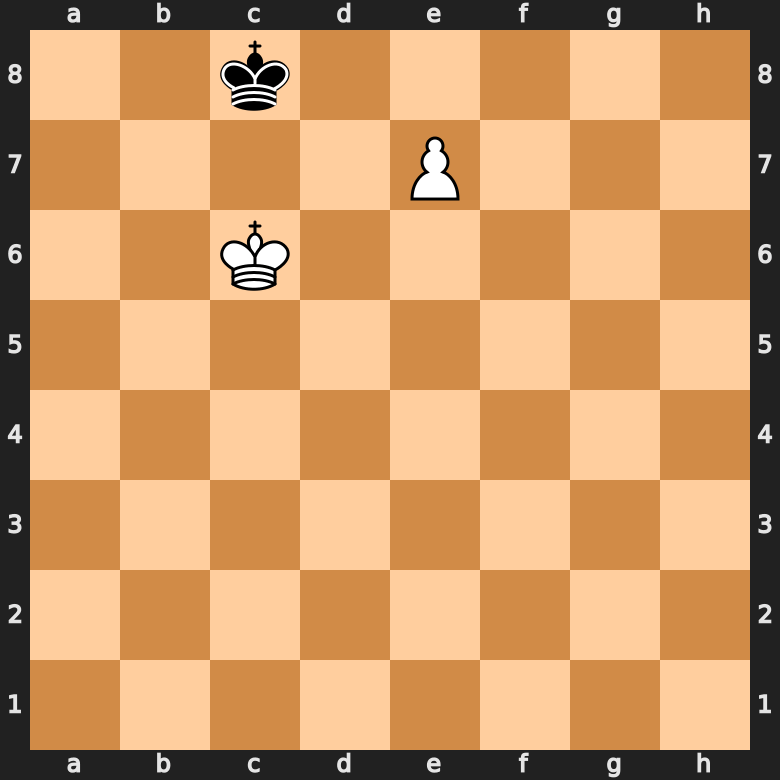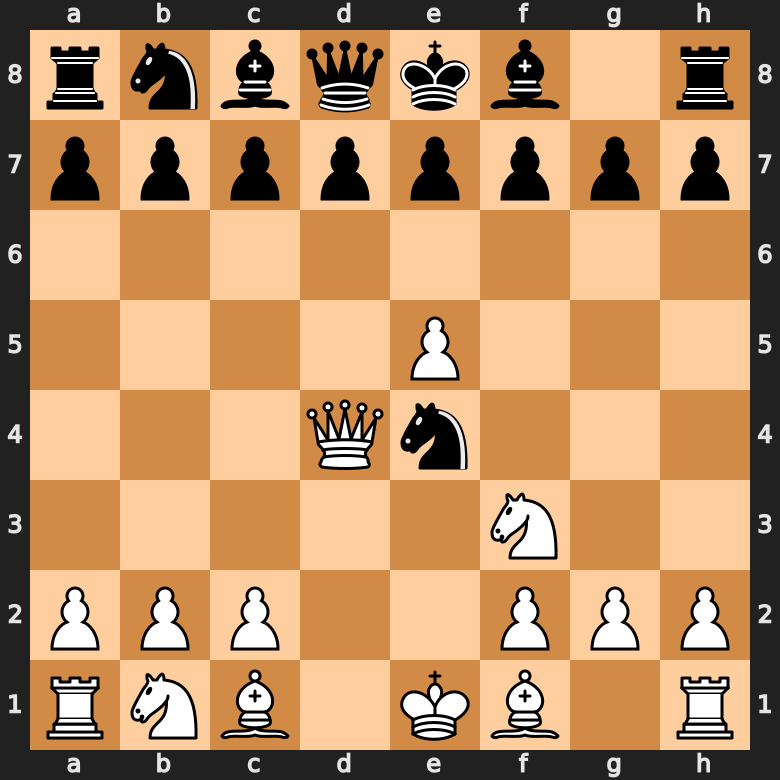The Pawn in Chess ♙: Everything You Need to Know
The pawn is the most numerous but weakest piece in chess. In total, there are 16 pawns – eight for each player. Historically, the pawn represents soldiers on a battlefield. While it might be weak on its own, pawns can be devastating when working together. So, let’s look at the pawn in detail 🔎!
Where are the Pawns on the Board?
The position of all 16 pawns is easy enough to remember. The eight white pawns occupy the second row, while the eight black pawns stand on the seventh row:

That means, that in the starting position the pawns stand in front rooks, knights, bishops, as well as king and queen. In other words: they form a defensive brigade in front of all other pieces.
How the Pawns Move in Chess
The movement of the pawn is quite special, in the sense that it essentially has three different possibilities to move.
- One square forward
- Two squares forward on the first move
- Capturing one square diagonally forward
Here you can see an example for each of these:

There is one odd move for the pawn in chess, which is called en passant – we’ll look at that in detail in just a second.
General Information on the Pawn
In chess notation, the pawn has no abbreviation in the form of a capitalized letter. Usually, we refer to pawns by the file they stand on (for example: White’s a-pawn).
Value of the Pawn
Since we measure the relative value of each chess piece by the amount of pawns it is worth, we don’t really have a good reference value for the pawns themselves. Obviously, one pawn is worth one pawn. Strictly mathematically speaking, the pawn is worth ⅓ of a bishop (or knight), ⅕ of a rook and ⅑ of a queen.
Pawn Strategy
Since pawns are by far the weakest pieces in chess, it is essential for all eight of them to work together to form an effective offense or defense. The problem with pawns is, that they cannot move backwards. Once they’re placed badly, you’ll have a hard time improving their position. So let’s dive into some basic pawn strategy and tips.
Pawn Structure
In chess, the configuration of all pawns is called the pawn structure. Ideally, you want your pawns to defend each other by being linked diagonally – this is called a pawn chain 🔗. The weakest part of a pawn chain is always the base, as it is not protected by another pawn.

In this position both players have strong pawn chains. However, the base of blacks pawn chain is about to fall, as it is undefended. This allows White to advance his e-pawn to promote it.
Isolated Pawn
Since pawns attack diagonally forward, they can defend each other when standing on adjacent files, as we’ve learned with pawn chains. The opposite to that is an isolated pawn. As the name suggests, a pawn is isolated whenever he does not have any friendly pawns on adjacent files, as seen here:

Can you spot the isolated pawn? White’s d-pawn is completely exposed in the middle without any support from friendly pawns 😥.
Usually, isolated pawns are strategic weaknesses, as they are not defended. In turn, stronger pieces often have to be redirected to protecting the pawn, even though they could be of better use somewhere else on the board.
There are however instances, where an isolated pawn can be of good use, as they have to (half-) open files next to them. Those files can support the attacks of long-range pieces such as the rook or queen.
Passed Pawn
The last type of pawn we’ll look at is the passed pawn. Every pawn that can’t be blocked or attacked by enemy pawns is called a passed pawn:

As you can see, the white c-pawn cannot be stopped by any of the black pawns, meaning it is “passed” their defense line. Since it is also part of a strong pawn chain (and thus defended), the white king can simply scoop up blacks h-pawn and convert this position into a win.
Pawn Promotion
One of two special moves the pawn can perform in chess is the pawn promotion. Since pawns can only move forwards, a common question we get is “what happens when the pawn reaches the other side of the board?” Well, that’s exactly where pawn promotion comes in.
Whenever a pawn reaches the other side of the board, it is immediately turned into either a new queen, rook, bishop, or knight. It is not possible to promote a pawn into another king (obviously).

Also, the promotion itself is forced. The pawn cannot remain a pawn on the enemy’s back rank. You can, however, freely choose which piece to promote your pawn into.
Capturing En Passant
The last special move the pawn has up his sleeve is a special type of capture: en passant. Normally, a pawn can only capture diagonally forwards. En passant allows a pawn to capture a pawn that just moved alongside it, as if it was standing diagonally in front of it. Let’s see when exactly you can capture en passant:
- Both pawns must occupy the same rank (i. e. stand in line horizontally).
- Both pawns must occupy adjacent files (i. e. stand directly besides each other).
- The enemy pawn moved two squares on the previous move.
This is how capturing en passant would look in a real game:

If you want to learn more about en passant, we have a full guide on the topic on our website.
3 Tips for Using Your Pawns in Game
- Move Your Pawns Wisely – They Can’t Move Backwards
- Pawn Chains are Strong, Isolated Pawns are Usually Weak
- Use Pawn Promotion as a Tool to Pressure Your Opponent in the Endgame
Pawns – Frequently Asked Questions
- How Does the Pawn Move in Chess?The pawn can move one square forward, two squares forward on its first move, and attack one square diagonally forward. Additionally, the pawn can capture en passant.
- Can the Pawn Move Backwards?No, the pawn can't move backwards. It is the only piece that can only advance forwards.
- Can the Pawn Jump Over Other Pieces?No, the pawn cannot jump over other pieces under any curcumstances.
- How Much is a Pawn Worth?Usually, the pawn itself is the measurement for the relative value of other chess pieces. But speaking from a strictly mathematical standpoint, the pawn is worth ⅓ of a bishop (or knight), ⅕ of a rook and ⅑ of a queen.
- What Happens When a Pawn Reaches the Other Side of the Board?Whenever a pawn reaches the enemy's back rank, the pawn is immediately exchanged for a queen, rook, bishop, or knight of the same color. This concept is called pawn promotion.
- Can a Pawn Take a King?Strictly speaking, the king can never be captured, only checkmated. In that sense, the pawn can checkmate a king.

